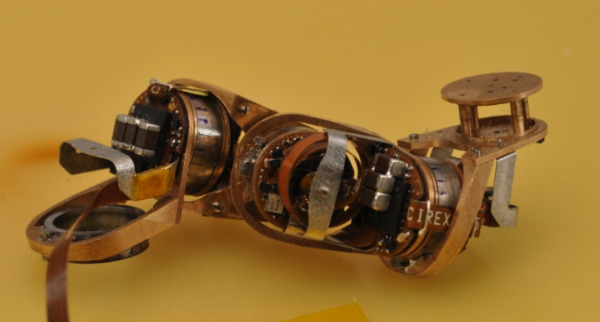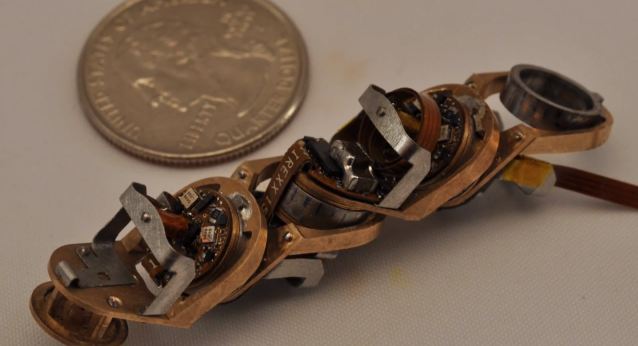MIT Invents Shape-Shifting Robots. Small Step Towards Real-Life Transformers

This device, known as a milli-motein, doesn’t look like much more than something you'd find in a home-workshop drawer. But this millimeter-sized set of motorized components inspired by proteins may be a harbinger of real-life Transformers, with the ability to naturally fold themselves into incredibly complex shapes.
Conceived by Neil Gershenfeld, head of MIT’s Center for Bits and Atoms, visiting scientist Ara Knaian and graduate student Kenneth Cheung, this DARPA-funded 'Swiss Army Knife' of robotics is the beginning of vast research into this area. The concept is a one-dimensional robot formed in a continuous strip, which can be folded into any shape the user commands, forming an infinitely malleable and multi-purpose device.

"This result brings us closer to the idea of programmable matter — where computer programs and materials merge to form a new kind of matter whose shape and function can be programmed — not unlike biology." Hod Lipson, an associate professor of mechanical and aerospace engineering and computing and information science at Cornell University commented. "Many people are excited today to learn about 3-D printing and its ability to fabricate any shape; Gershenfeld’s group is already thinking about the next episode, where we don’t just control the shape of objects, but also their behavior."
The milli-motein is only the beginning, and part of a family of such devices being explored at size scales ranging from protein-based “nanoassemblers” to a version where the chain is as big as a person, Neil Gershenfeld says. This work could lead to robotic systems that can be dynamically reconfigured to do many different jobs rather than repeating a fixed function, and that can be produced much more cheaply than conventional robotics.
Ultimately, these 'Transformers' could be more versatile than anything we saw in the animated show! Let's just hope they don't pledge their allegiance to the Decepticons: best bring Cambridge University's anti-Skynet group into this. This is equal parts awesome and terrifying!
Source: MIT
Jason England

